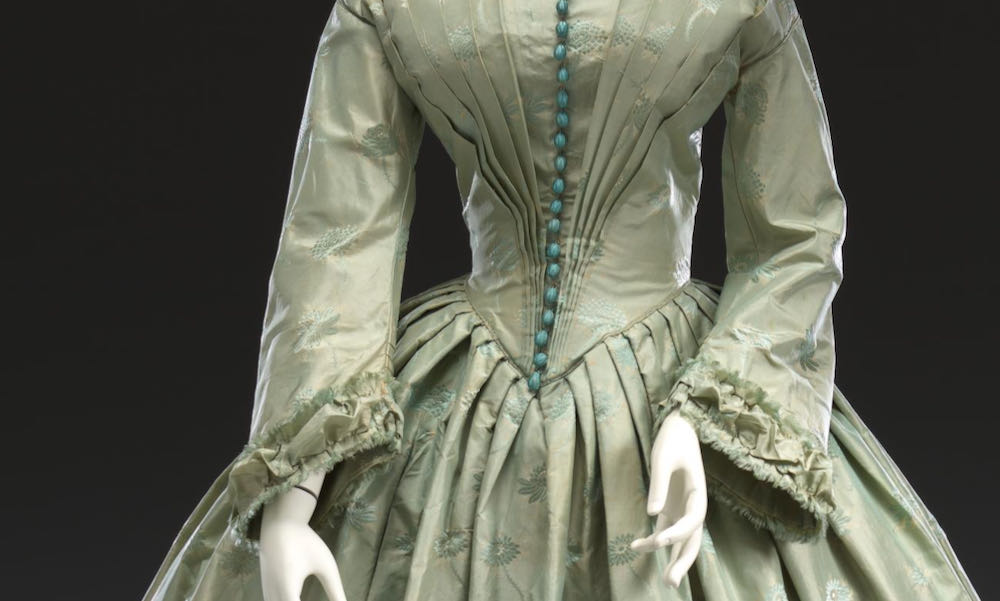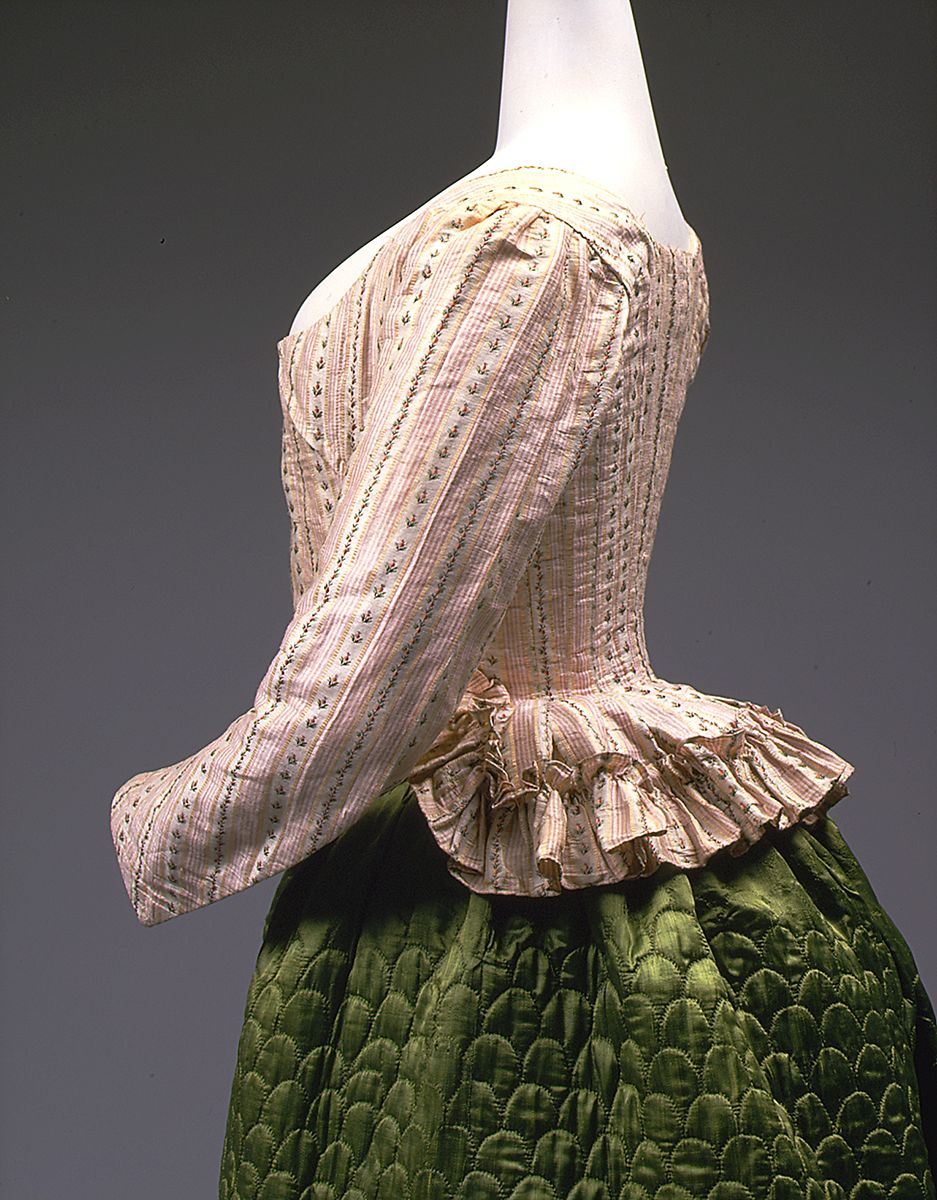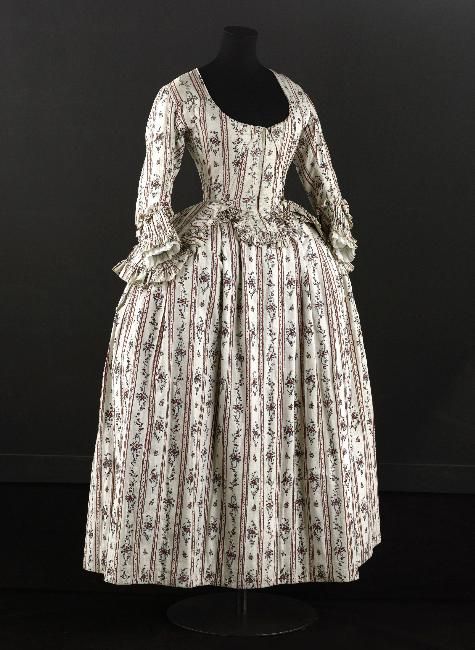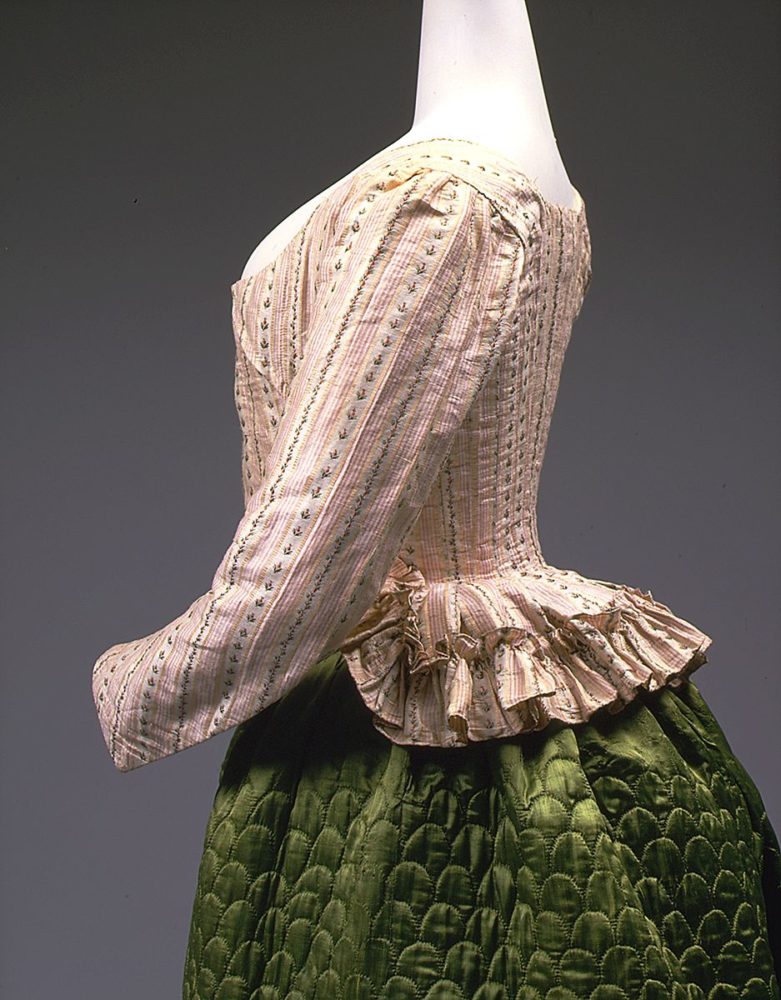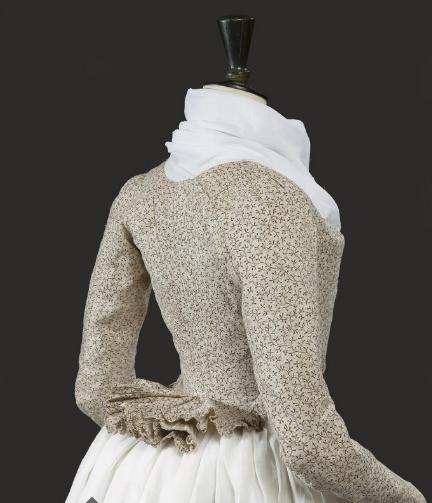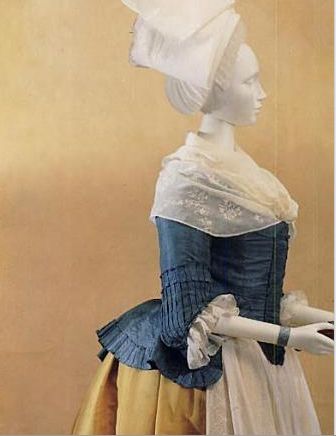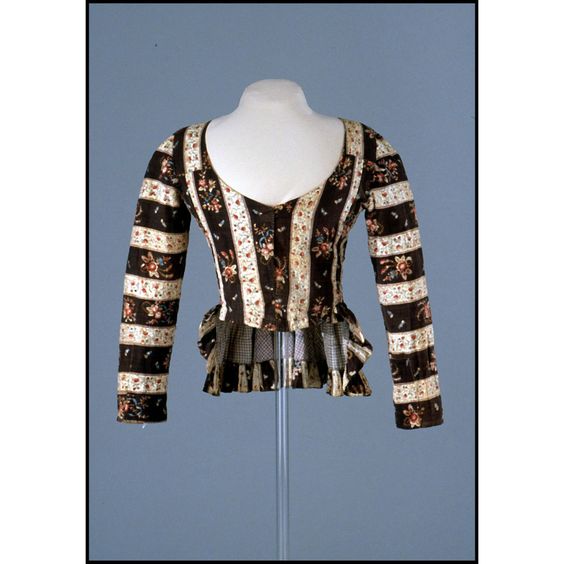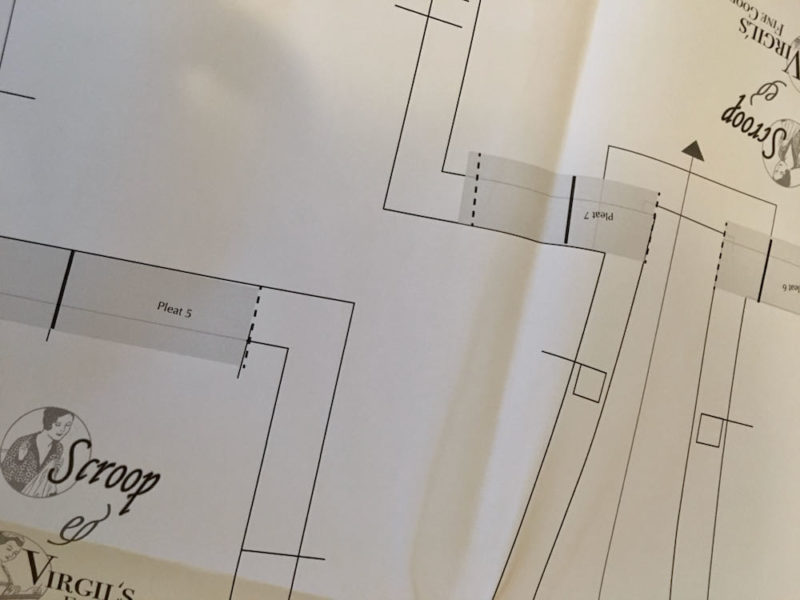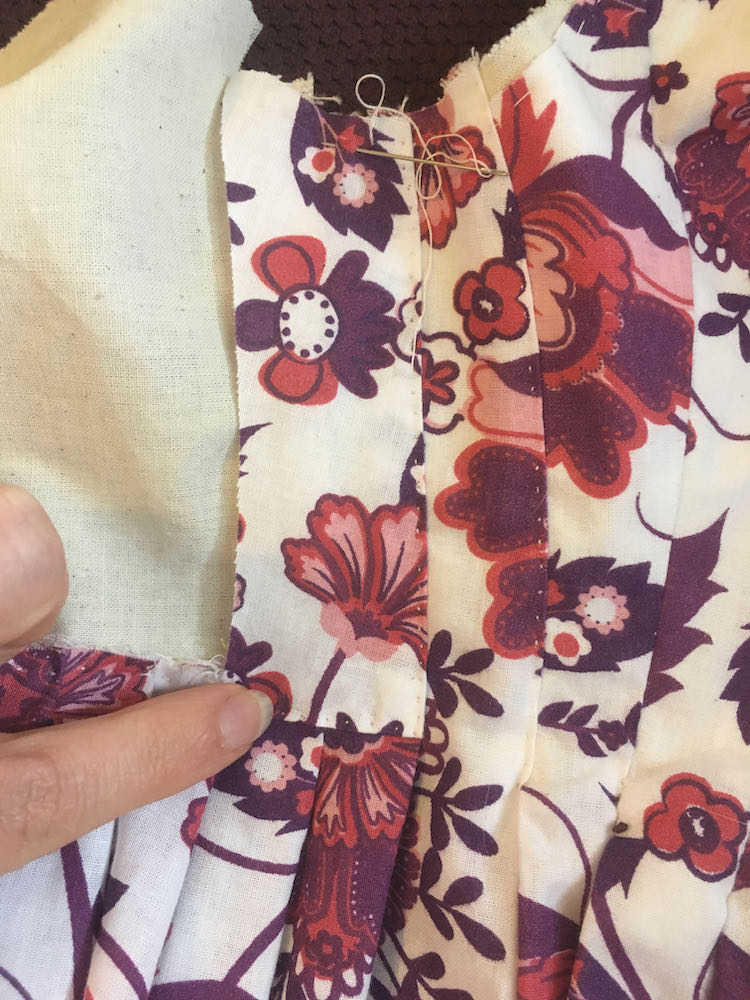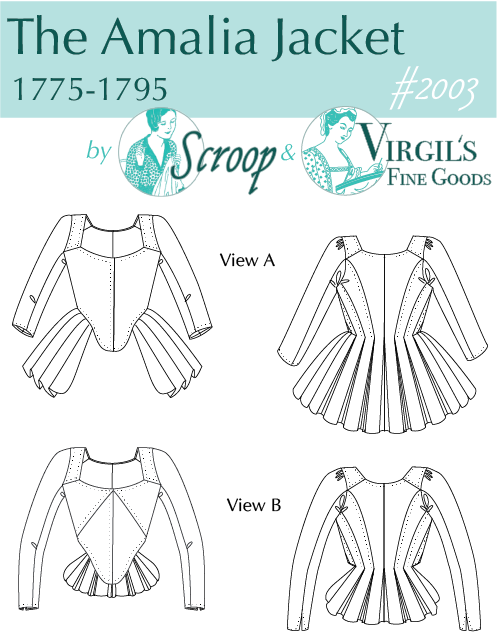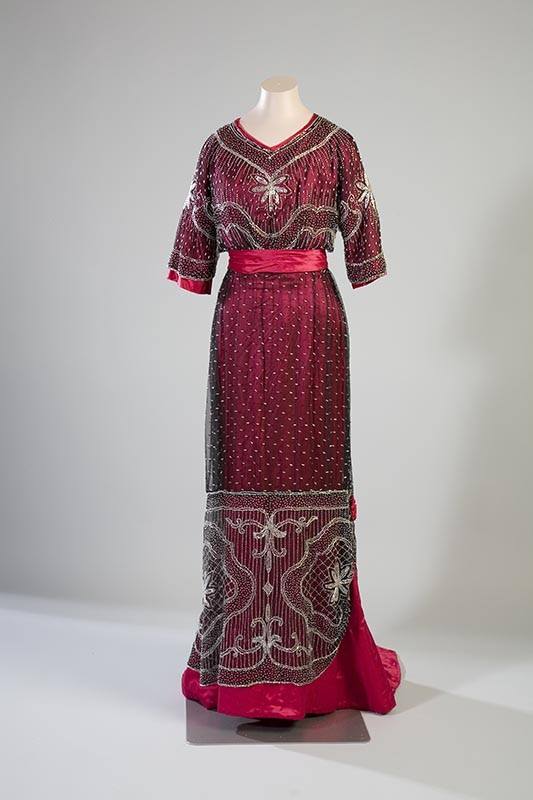I’ve got a bit of a tradition on Rate the Dress of sharing a wedding dress for New Years. A dress to celebrate a big change, and a new life. That doesn’t mean it’s acres of white silk every New Years though. Women in the past got married in all sorts of fabrics, in all sorts of shades. This year’s wedding dress is an 1850s number in soft green. Let’s find out how you feel about it!
Last Week: a 1910s evening dress in dark pink-red
Most of you loved last week’s dress. You adored the sparkle and colour, and thought it was the perfect blend of ornamentation and simplicity. Others thought it might be a bit matronly. And some of you thought it was just not quite right: not well thought out and poorly balanced. But nobody hated it, so there’s something to be said for that!
The Total: 8.8 out of 10
Pretty good! And a pleasing 1.1 point up from last week, which appeals to my sense of organisation.
This week: an wedding dress in soft green from 1850
This wedding dress is a perfect example of the transition from classic 1840s style to classic 1850s style, having many elements of both.
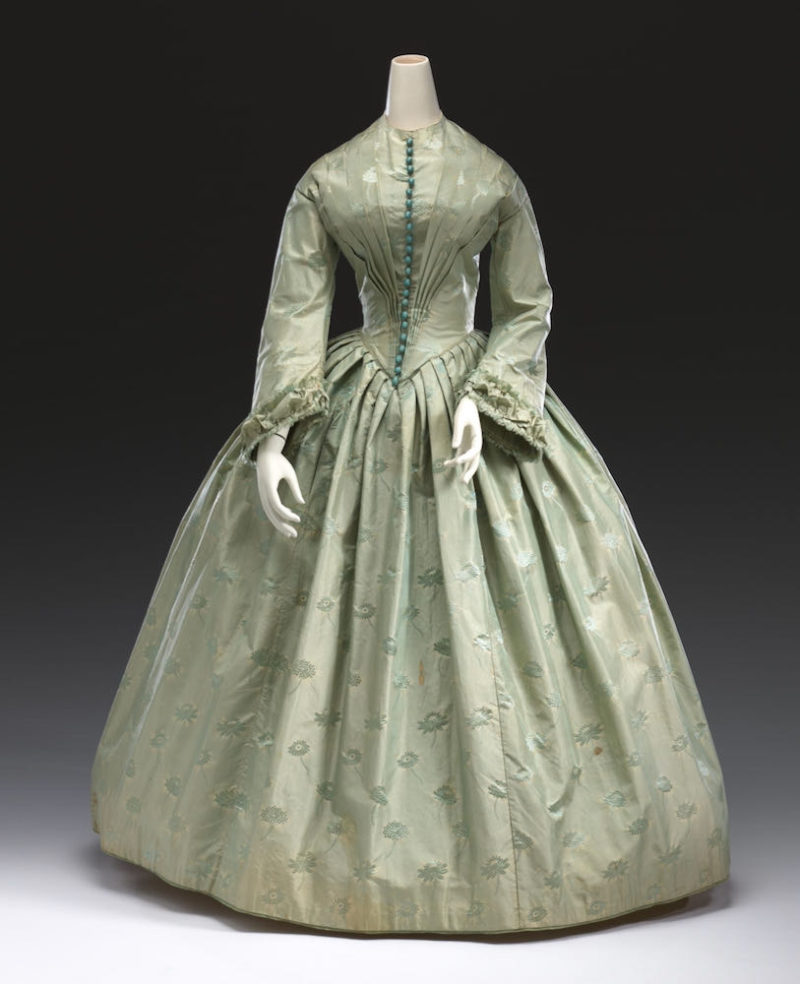
The skirt is wide enough to accomodate a large hoop, but still has a clear bell shape.
The bodice features a crisp fan-pleated front, a very popular feature in the 1840s that became less common and fashionable as the 1850s progressed.
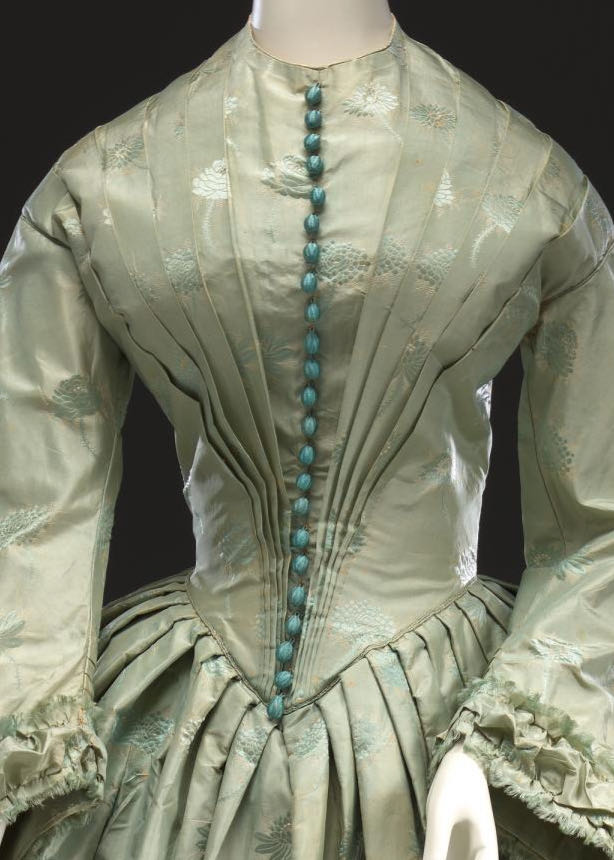
The bodice features a false front closure ornamented with wrapped thread toggle buttons. Their aqua shade complements the hues in the brocaded flowers of the silk fabric.
Note the double layer of extremely fine piping finishing the waistline. Double piping edge finishes, particularly at the waist, are seen on many 1840s and 50s dresses, although this is a particularly narrow example.
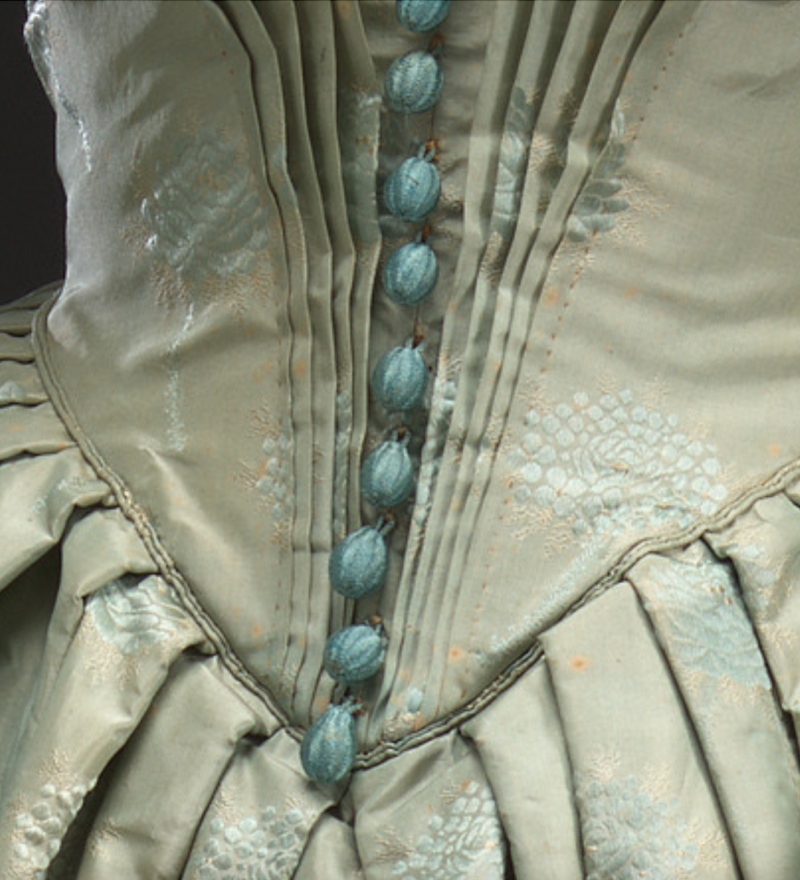
The fabric features four different kinds of flowers, some realistic, some more fantastical. There are roses, and one that two that look like looks like a rose surrounded by small flowers. The other two are daisies or chrysanthemums (or perhaps a waterlily for one of them?).
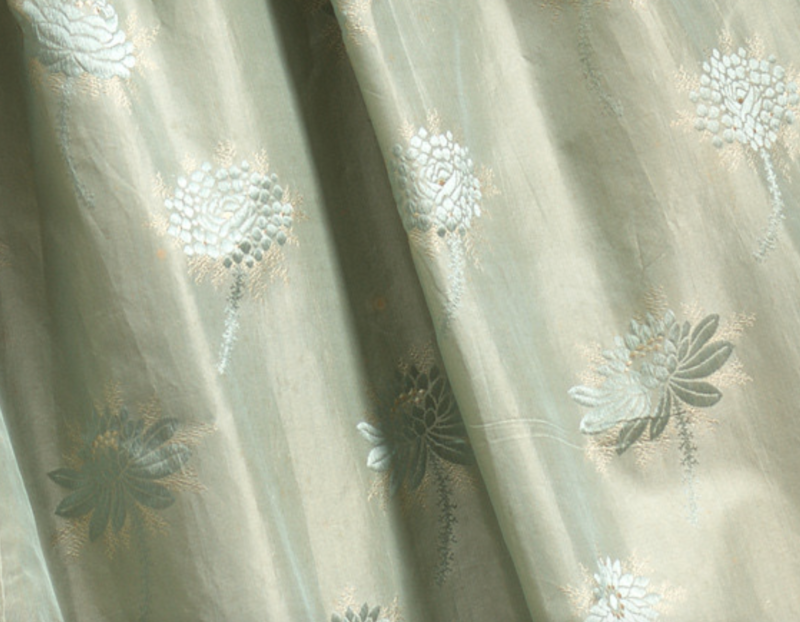
The sleeves are widening into the classic pagoda shape of the 1850s. They would probably have been worn with decorative cotton engageantes underneath.
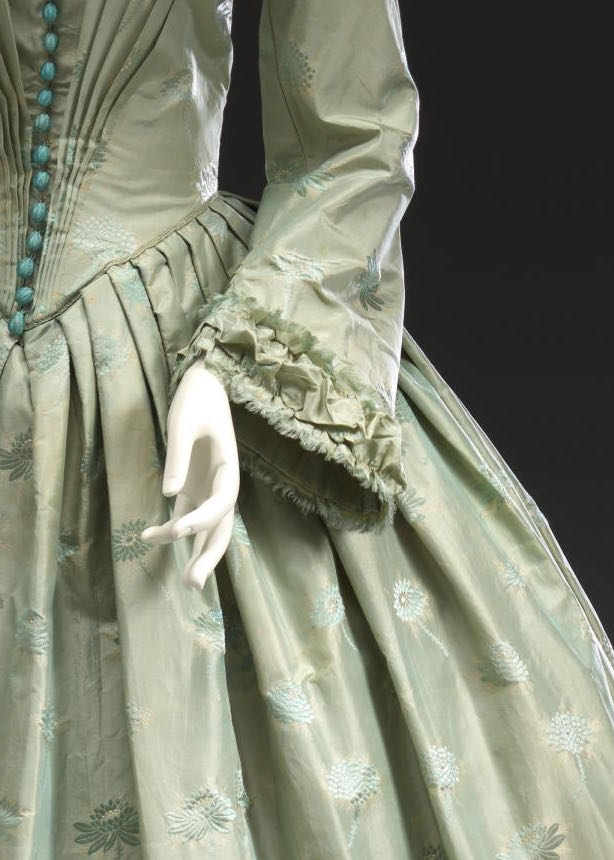
The cuffs have very interesting trimmings: strips of self fabric unravelled on each edge to create a soft fringe, and gathered in to create a soft ruched puff.
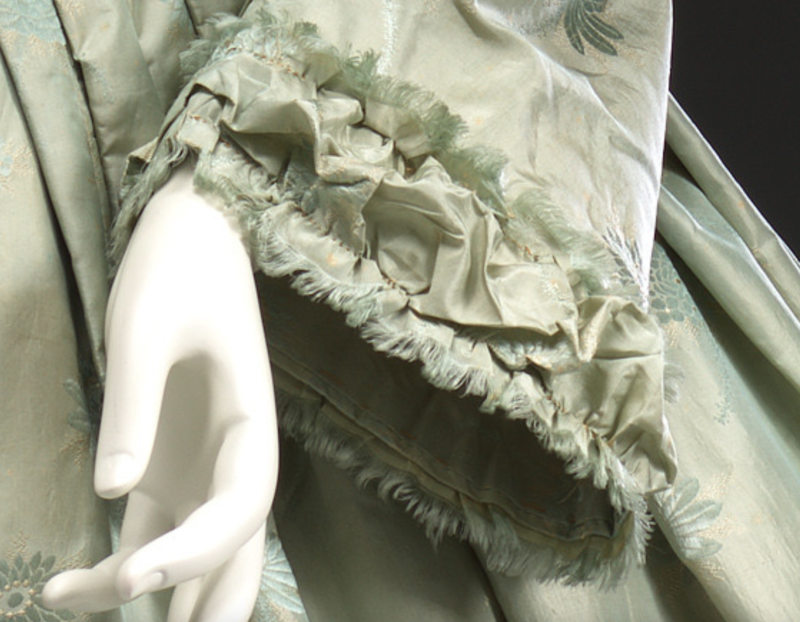
What do you think? The perfect mix of new and classic for a mid-century bride? Or does the old rhyme about ‘Married in green, ashamed to be seen’ apply?
Rate the Dress on a Scale of 1 to 10
A reminder about rating — feel free to be critical if you don’t like a thing, but make sure that your comments aren’t actually insulting to those who do like a garment. Phrase criticism as your opinion, rather than a flat fact. Our different tastes are what make Rate the Dress so interesting. It’s no fun when a comment implies that anyone who doesn’t agree with it, or who would wear a garment, is totally lacking in taste.
As usual, nothing more complicated than a .5. I also hugely appreciate it if you only do one rating, and set it on a line at the very end of your comment.

